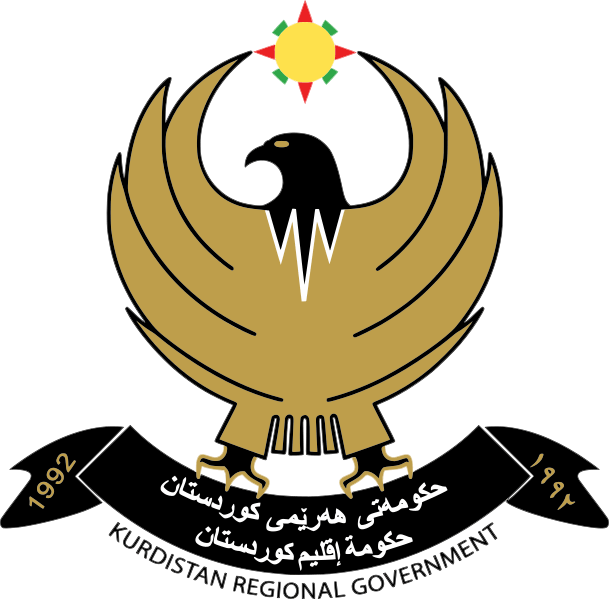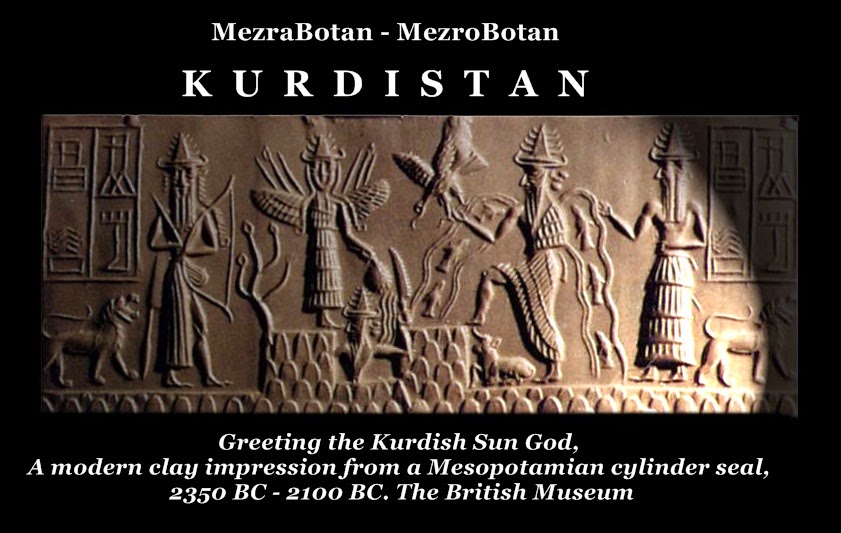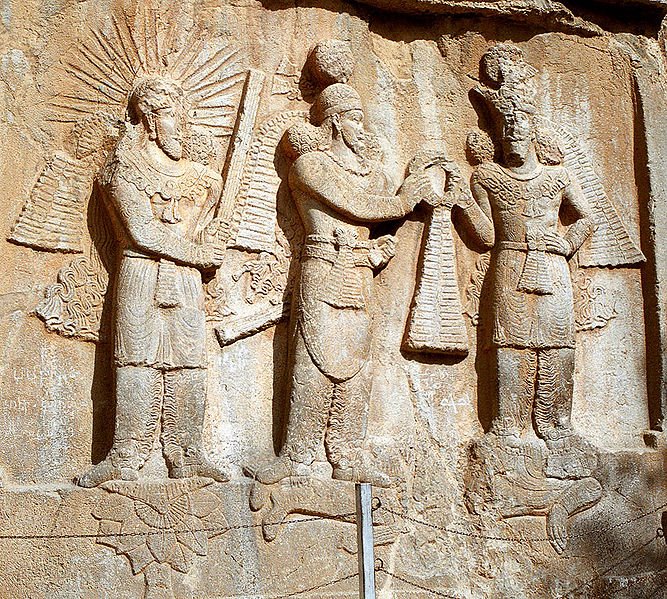
Kurds Symbol
The Kurdish wild rocky mountain goats "KELL" has become a national symbol in Kurdistan. Kell can be terraced in the Kurdish folklore, archaeological artifacts and art works. The kell is a symbols of power and strength in Kurdish literature. The image of kell has been found on many archaeological artifacts from the sites in Kirmashan, Zéwe.

108 best Kurdish Symbols images on Pinterest Symbols, Icons and Religion
Symbolism The Kurdish flag is the most important symbol of cohesive Kurdish identity. Since it was first hoisted in 1946 to represent the concept of an independent Kurdistan (called the Republic of Mahabad and founded in Iranian territory) it has become a symbol of the national identity of Kurds. [7]

Kurdish logos and symbols Page 2 to Kurdistan Boards
Today, Kurdish rug motifs are some of the Kurdish culture's most visible and identifiable symbols. Although the meanings of the woven motifs have evolved and are sometimes interpreted in various ways, the Kurdish rug and its symbols endure as a significant contribution to art and history.

FileOld Kurdish alphabet.png Alphabet, Symbol tattoos, Symbols
Salih Muslim Myths Sīmir, mythological figure, found in Kurdish folklore. Kawa the Blacksmith, mythological figure, found in Kurdish folklore. Rûsem, mythological figure, found in Kurdish Shahnameh. Felamerz, a figure in Kurdish Shahnameh Sam, a figure in Kurdish Shahnameh Zenûn, a figure in Kurdish Shahnameh Poets Mela Hesenê Bateyî Melayê Cizîrî

KURDISH CELEBRATIONS (The Circle of Ancient Iranian Studies CAIS)©
Kurdish mythology includes Kurdish and Yazidi myths and legends. The Kurds have a very rich folklore, which until recent times has been transmitted mainly through songs, tales or oral histories, from one generation to another. Even though a few stories of great Kurdish authors were famous throughout Kurdistan, most of the stories recited and sung were only written in the 20th and 21st centuries.

Coat of arms for Greater Kurdistan. Blason Vert, kurdish sun Or, bordure Gules fimbriated Argen
Folklore has been a phenomenon based on nostalgic and autochthonous nuances conveyed with a story-telling technique with a penchant for over-playing and nationalistic pomp and circumstance, often with significant consequences for societal, poetic, and cultural areas. These papers highlight challenges that have an outreaching relationship to the regional, rhetorical, and trans-rhetorical.

Image Coat of Arms of Kurdistan
Ancient pharmacopoeias (medicine catalogues) attribute supernatural powers to the eagle, prescribing the consumption of eagle blood for strength and courage. A motif of an eagle on a Kurdish rug. Humai . According to Kurdish beliefs, the responsibility of sending rain rests with God, who employs Solomon, the ruler over all animals, as an.

Ancient kurdish alphabet Kurdistan, Islamic phrases, Alphabet
Shahmaran is the name given to a mythical creature found in the various cultures of the Middle East, in particular, those of the eastern Anatolian region of Turkey. According to the folklore of these cultures, Shahmaran was a creature with the top half of a woman, and the bottom half of a snake. According to legend Shahmaran had magical powers.

4 symbols of 4 religions. Mardin is a city in a rocky region in southeastern Anatolia, known by
The primary Kurdish characteristic of the flag is the golden sun emblem atthe center. The sun emblem has a rligious and cultural history among the Kurds, stretching into antiquity. Figure 2 The sun disk of the emblem has 21 rays, equal in size and shape. The number 21 holds a primary importance in the native Yazdani religious tradition of the.

Ancient Kurdish runes by IasonKeltenkreuzler on DeviantArt
History of Kurdish People. Kurds were traditionally nomadic people who herded goats and sheep through the highlands and plains of Mesopotamia in modern-day Iran and Turkey. In the 7th century C.E.

PhotoStory of the KURDS FROM THE EARLIER CENTURIES in 2020 Ancient babylon, The kurds, Photo story
© Michelle May The Kurdish people are a heterogeneous ethnic group whose ethnic background comes from many regions including Iraqi Kurdistan, and parts of Iran , Turkey, and Syria. The Kurdish ethnic group includes many ancient ethnicities that have been absorbed into modern cultures including Iranian, Azerbaijani, Turkic and Arabic cultures.

The Land of Kurds Kurdistan (AnatoliaMesopotamia) Four Gods Greet the Rising Sun God
History The prehistory of the Kurds is poorly known, but their ancestors seem to have inhabited the same upland region for millennia. The records of the early empires of Mesopotamia contain frequent references to mountain tribes with names resembling "Kurd."

HISTORICAL RUINS OF KURDISTAN
Keleshin So Keleshin Means blue headstone in English. And it's a blue rock Art and stele on which important Assyrian-Vannic bilingual texts have been written. The stele is located in Keleshin village in Northern Erbil. The Keleshin stele bears many historical events.

83 best Kurdish Symbols images on Pinterest Ancient art, Ancient artifacts and Ancient mesopotamia
The Kurdish languages are written in either of two alphabets: a Latin alphabet introduced by Celadet Alî Bedirxan in 1932 called the Bedirxan alphabet or Hawar alphabet (after Hawar magazine) and an Arabic script called the Sorani or Central Kurdish alphabet.
The Land of Kurds Kurdistan (AnatoliaMesopotamia) Ancient Kurdish Religion and mythology
Since 1932 Kurdish has been written with the Latin alphabet in Turkey and Syria. Before then, it was written with a version of the Arabic script. In parts of the former USSR it is written with a version of the Cyrillic alphabet, which was devised in 1946 by Heciyê Cindî (1908-1990), a Kurdish linguist from Armenia.

Pin by mr. BX on Ancient symbols Kurdistan, Ancient symbols, Party flags
The Ancient Kurdish Alphabet: This alphabet was first mentioned by Ibn Wahshiyya in his book, titled; Ancient Alphabets and Hieroglyphic Characters Explained: With an Account of the Egyptian Priests, Their Classes, Initiation, and Sacrifices, in the Arabic Language, (Kitab Shawq Al-Mustaham Fi Maarfa Romoz Al-Aqlam), which was composed in 856 A.D.